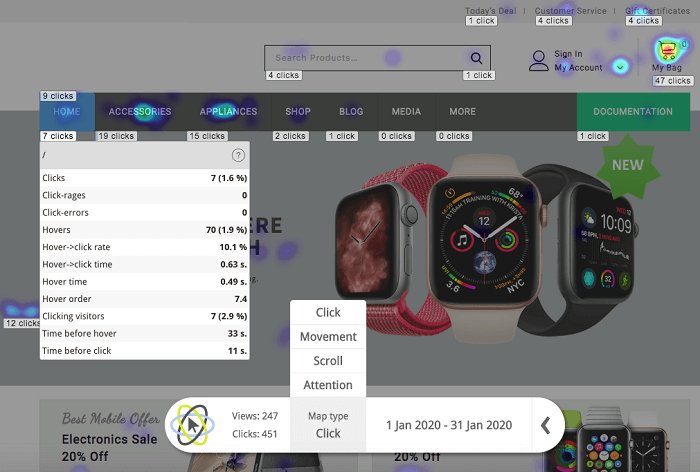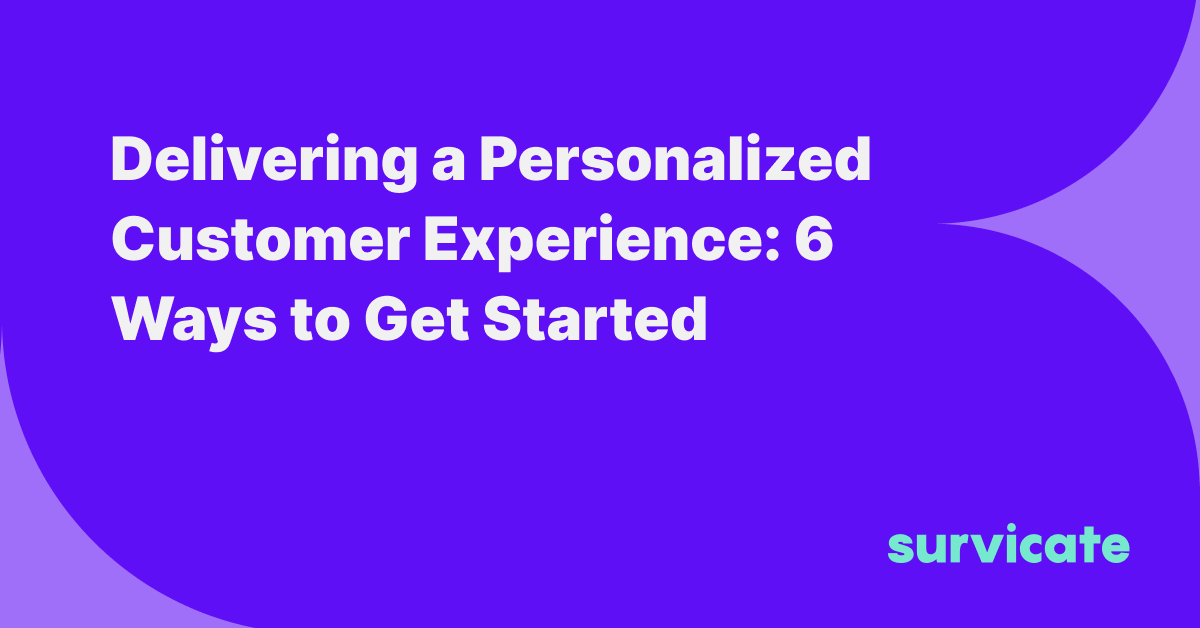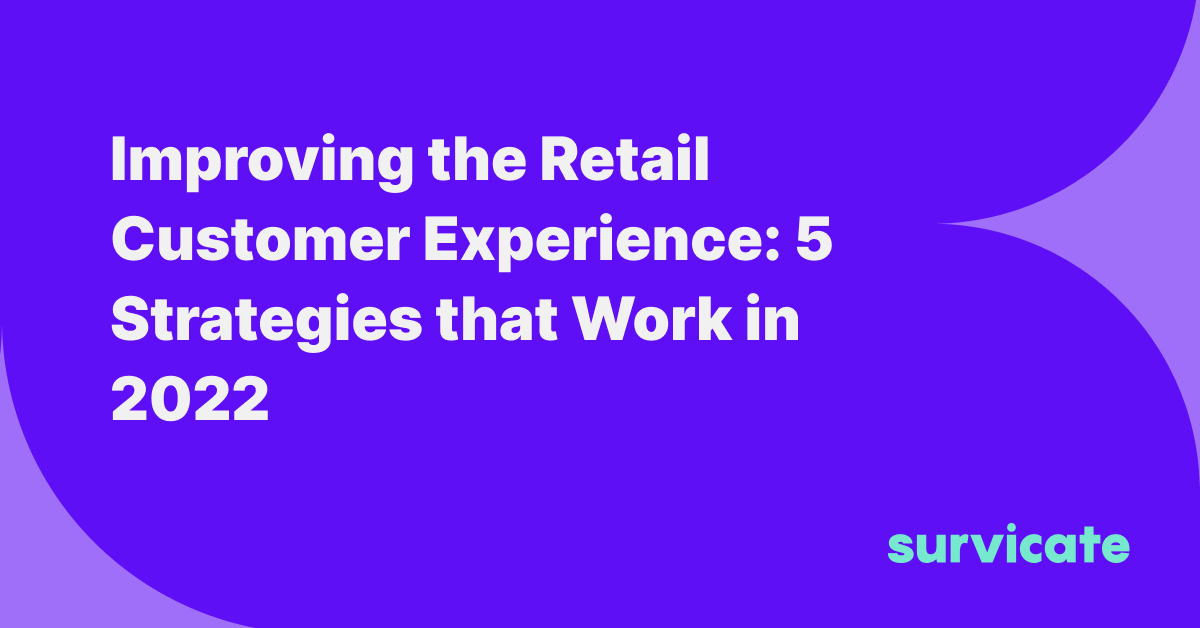Customer experience has become one of the pillars of profitability for modern businesses, no matter what you sell and who your customers are. The numbers don’t lie - customer-centric companies are 60% more profitable than those without a clear focus on their customers.
But that’s all theory. If you’re looking to put excellent customer experience into practice, you need all the help that you can get. Today, we’ll show you some of the very best customer experience tools you can use to impress your customers and improve your bottom line.
What is customer experience tool
By definition, a customer experience tool is a cloud-based app that lets you interact with your customers throughout their customer journey. In short, it’s a piece of software that you can use to monitor and improve your customer experience.
Bear in mind that the customer journey is rather complex and involves all the touchpoints, from the moment someone is unaware of your product, all the way to becoming a brand ambassador. With this in mind, we’ve prepared an entire tool stack that will let you better care for your customers at all times and stay on top of your customer experience metrics.
Great customer experience tools like Survicate lets you make quick work of measuring how your customers feel about your company and product. In Survicate, you can do that using some of the many survey templates.

The best customer experience tool stack for your business
Picking the right customer experience tools can be tricky, especially if you’ve never used such a tool before and you’re not sure how the customer experience process should look like. To make it easier for you, we’ve created a list of customer experience tools that you can leverage in your business.
Survicate
What’s the best way to find out how to improve your customer experience? Well, you just ask your customers. With Survicate, you can build surveys in as little as five minutes to ask your customers about their experience with your product and brand.
Yep, you read it right, it’s surveys - plural. Survicate allows you to create 15 different survey types, including the most popular ones such as NPS, CES and CSAT. No matter the situation or the type of answer you’re trying to get, you can build a survey for your needs with just the right question types.
But it doesn’t stop there. A survey without distribution is like a 5-star meal in a restaurant that no one visits. With Survicate, you can distribute surveys through email, websites, mobile apps, and links. After you’ve built your survey, you can choose one or all methods of distribution for maximum reach and effect.
When the results start coming in, you’ll want to analyze them and you can do that in real-time. Using the Survicate dashboard, you can track results as they’re getting to you and make immediate decisions. You can also filter your responses based on the date, identity and other custom attributes to get segmented results. Last but not least, you can go down to the level of an individual customer to discover the content of each individual response.
Closing the feedback loop is crucial, which is why Survicate integrates with 23 different tools to notify your customers that you got their response. Moreover, you can use these channels to let them know that their suggestions have been implemented or that you’re working on them.
Survicate offers a 10-day free trial that offers access to all Business plan features, including 30+ native integrations, website, email, in-product and link surveys, as well as advanced attribute targeting, to name a few. An enterprise plan is also available.
Intercom
Hate it or love it, Intercom is one of the top customer satisfaction tools in the game for a long while. Most Intercom users will complain about the hefty price tag, but they will also say that nothing else does the same (or similar) job as well as Intercom.
Whatever you want to communicate to your customers, Intercom is there for you. From chatbots to live chat to in-product messages and emails, Intercom does it all. There are other tools that offer chatbots, but Intercom creates an entire customer journey within the tool so you can personalize your messaging and keep tabs on every single customer.
As of recently, Intercom doesn’t have publicly available pricing on their website. However, expect to pay anywhere from $79 to $999 per month when you sign up. And the more contacts you have and the longer you use it, the bigger your monthly invoices get.
If you’re running surveys with Survicate and using Intercom at the same time, you’ll love our integration with Intercom. Among other things, you can send survey responses to Intercom contacts.
Zendesk
Another giant in the customer service tool game, Zendesk provides a comprehensive solution for customer communication. You can use it to build amazing chatbots as a first touchpoint with your customers and give an option of contacting a customer representative who picks up once things get complex.
Zendesk goes one step further by allowing you to create support forums and help centers for your customers as a way to offer self-service. Just like Intercom, it’s easier to connect your channels for a true omnichannel customer experience - live chat, email, phone and everything else in a single app.
Pricing starts at $49 per agent per month, which gives you access to all the most important Zendesk features. Moving on to pricier plans makes sense if you want perks such as SLAs (service level agreements) and multi-language support.
If you already use Zendesk and you’re looking for new survey tools, give Survicate a try! Our Zendesk integration lets you update your Zendesk tickets with new survey information - which is just one of its many benefits.
Hotjar
Hotjar is an excellent tool for improving your CX. That is, provided that your customers give you the feedback. There is so much left unsaid and this is where Hotjar comes in - to show you what customers are withholding from you.
Hotjar is the best-known software for website heatmaps and customer session recordings. Just install it on your website, and Hotjar will give you a heatmap representation of where customers spend the most of their time and where they get stuck - revealing possible points for improvement.
It also offers live session recordings, so you can go into an individual customer’s session and see how they behave on your website. On top of these well-known features, Hotjar also offers customer feedback surveys and polls.
Prices start at $31 per month, which sounds like an amazing deal for what you get. The caveat is that for that money, you only get 100 sessions per day. Depending on the amount of traffic that you get, this could be pretty insufficient.
Mouseflow
Following a similar philosophy to Hotjar, Mouseflow lets you discover what happens under the hood. It offers six different types of heatmaps that show you what your customers are doing, where they are clicking and dropping off - so you can take immediate action. Like Hotjar, it also offers session replays for individual visitors.

One thing that sets Mouseflow apart is that you can analyze individual forms. They’re a known friction point for user experience and with Mouseflow, you can figure out if you have a field too many or if a form is ruining your customer experience.
The basic plan is $24 per month for one website which gives you access to 5,000 monthly user recordings. The only caveat is that sessions are recorded and stored for up to three months, so if having that history is important to you, it might be a necessity to pay for a pricier plan.
Fullstory
They call themselves a Digital Experience Intelligence platform, but the reality is that Fullstory is a product very much similar to Hotjar and Mouseflow. Just run it on your website and let it collect insights about your customers that they are not telling you.
Unlike the competitors, Fullstory puts more of a focus on privacy with data collecting. You only get to collect the important data bits while staying fully compliant with GDPR and similar laws. It offers live session recordings and heatmaps but goes one step further to offer you solutions on how you can fix problems that come up on your website.
Pricing is not publicly available so you’ll have to do some digging around to get the right information. And that is - the most affordable plan starts at $700 per month, which might be a bit more than you’ve prepared for, so Hotjar still remains #1 in this category or products.
By the way, did you know that Survicate also has a Fullstory integration? Connect the two apps together to watch Fullstory session replays associated with Survicate survey responses and more.
Salesforce
Salesforce is to CRMs what Coca-Cola is to soft drinks. If you know what a CRM platform is, you’re aware that this is an option you definitely need to consider. And indeed, Salesforce offers a host of products for customer support and sales that make it easy to organize your customer communications and improve their experience.
Salesforce lets you personalize the way you communicate with your customers based on the information you have stored in the CRM. You can also create smart workflows based on previous interactions and the results you want to achieve for a specific customer segment.
Salesforce has so much to offer that we could write an entire blog post just on that. What’s even more complex than their product is the pricing. Basic offers for packages start at $25 per user per month if you want just a single aspect of their offer. If you want Service, Sales, Marketing and more, you’ll have to pay for each add-on. Before you know it, your small business could end up spending hundreds per month for this CRM.
If you’re using Salesforce already and looking for survey software, Survicate is the right choice. We have a Salesforce integration that lets you trigger workflows in Salesforce based on the answers that customers provide in Survicate.
CloudTalk
Phone communication is still a major part of the customer experience. And while new channels such as live chat and chatbots are growing in use, nothing can beat a good phone call to quickly resolve a customer’s problem. CloudTalk is a VoIP provider that has all the bells and whistles that you need for a great customer service experience.
You can use call routing to distribute your calls even among agents or the callback feature to immediately ring a customer back if your agents are busy. Create smart phone trees with the IVR feature, use call notes and three-way conversations and let your agents achieve full productivity, all while making your customers happy.
CloudTalk pricing starts at $25 per user per month for all of the features mentioned above. You will have to pay a bit extra to get access to SMS messages and integrations, though.
Zoho CRM
You’ve probably heard of Zoho before, even if it wasn’t their CRM. This tech leader offers a wide variety of tools and their CRM is world-class and has a wealth of features, albeit targeted more towards the enterprise sector.
Besides having countless great tools for sales, Zoho also lets you create and customize your entire customer journey. No matter what channels you use, you can change the messaging based on the data you have on your CRM. You can use Zoho in your emails, phone calls, social media platforms and even a self-service customer portal.
When it comes to pricing, Zoho clearly comes out on top of Salesforce as it’s pretty easy to see what you get in each of their plans. They start at $14 per user per month, which gives you access to the basic CRM + customer service tool stack. However, we suggest opting for the Enterprise plan ($40/user/month) to make use of advanced customization and advanced user portals.
Salesflare
While it is still kind of new in the CRM game, Salesflare has many fans. The reason is simple - the product was built for small and midsize businesses that got fed up with Hubspot, Salesforce and Zoho as the main options. The focus is on simplicity in use, features and pricing.
It’s definitely easy to use as you’ll cut down on the time you spend entering data. Not only that but you’ll cut down on the time spent on follow-ups, as each interaction is automated. There’s a shared inbox too to keep track of all customer interactions in one place.
At $29 per user per month, it’s a great deal, especially when you consider that there are no complex add-ons and pricing structures.
FeedBear
If you’re looking for one product feedback tool that makes it super easy to collect product feedback and create roadmaps and changelogs, this is it. In a pretty crowded market, FeedBear has come out on top for its ease of use and features catered toward smaller SaaS companies.
At the heart of FeedBear are feedback boards, places where your customers can leave bug reports or feature requests. Other customers can then comment on these items and upvote them to let you know what’s important. The very best feature requests get moved to product roadmaps, which take 5 minutes to make in FeedBear. Last but not least, you can create a changelog with just a few clicks.
You can get FeedBear for $29 per project per month, which gives you unlimited customers and three user seats. Given the features and the competitors’ pricing, it’s a pretty good deal for roadmapping software.
Canny.io
If you like FeedBear but want something a bit more advanced, Canny.io is where it’s at. Although fairly new in the roadmapping software game, it boasts some impressive customers, including Ahrefs. It’s built for more advanced SaaS teams that need a feedback hub for collecting, analyzing and managing customer experience and feedback.
You can pool all of your feedback from different channels (email, live chat, social media and more) into Canny to have a centralized place for all feedback. Analysis is easy as you can attach data to each piece of feedback, such as customer MRR, company size and more, so you can easily prioritize features and build a roadmap. Whether you want to collect and analyze feedback globally or for one specific customer, Canny has it all.
At $400 per month, Canny is not exactly cheap, but it is well worth the price if you have a strong product team and want to make sure you collect and analyze product feedback efficiently.
Uservoice
While Canny is geared towards startups and small businesses, Uservoice is clearly built for an enterprise audience. There are plenty of (useful) features but the reality is that you’ll end up using just a portion of them.
Uservoice lets you capture both internal and external feedback and categorize it and manage it. Segment your customers, split up feedback based on the source and get an accurate ROI of each feature request that you get. You can easily create public and private roadmaps and communicate with customers one on one as new features go live.
The problems start when you find out that Uservoice costs a minimum of $799 per month. To add insult to injury, that gets you unique feedback from only 200 customers. For anything more than that, you’ll spend more than four figures per month.
Freshdesk
Ready to solve customer tickets more quickly than ever before? Freshdesk lets you do that by integrating a mix of channels under one roof - including email, phone, live chat and even Whatsapp Business.
Besides improving the customer experience, Freshdesk actually saves time and money with automation. No matter what channel you use, you can create automation rules for each customer interaction. Based on the email, call or message, you can assign different priorities and rules about what happens next - whether someone gets forwarded to a live rep or gets a canned message.
For everything that it offers, Freshdesk is pretty cheap. It starts at $15 per agent per month, which gives you a wealth of features you can take months to master.
Helpscout
If you have a large customer service team and you often have multiple agents talking to the same customer(s), this might be the tool for you. Helpscout is a shared inbox tool that lets your entire team communicate with customers in one centralized dashboard.
Similar to Freshdesk, you can use automation to create workflows based on the messages you get from your customers. Also like Freshdesk, there’s a live chat feature. Where Helpscout really shines is the ability to create your own knowledge base. It not only looks great but it also lets customers resolve problems on their own without even reaching out to your team.
Helpscout starts at $20 per user but this is not the plan you want to get, as it limits your customer number to 25. The one you want starts at $35 per agent as you get unlimited customers for your account.
Guru
If you’ve ever heard the term “the single source of truth”, this is as close as it gets. There are many ways to describe Guru, but the best one is - it’s a platform that stores all your company documentation in one place.
Every bit of information that your customers need to access can be created and organized with Guru. Whether it’s a Google Doc, a Slack message or somewhere inside of your app, you can add it to Guru and make it easily accessible for customers and your own team.
Guru starts at $10 per user per month, which gives you access to the most important features, including the option to build new knowledge base entries from your Slack account.
Wrapping up
Working on your customer experience is not a one-time endeavor. It’s something that your business needs to actively work on every day, to achieve results such as improved revenue, lower churn and ultimately, happier customers. We hope that these customer experience tools gave you some ideas on where you can get started.
If you want to make that first step today, sign up for Survicate. The best way to improve your customer experience is to ask your customers what you can do better. With Survicate, you’ll always feel the pulse of your customers and capture qualitative and quantitive feedback that helps you get better every day. Create your free account to take advantage of the 10-day trial today.

.webp)






.svg)
.svg)
.svg)

.svg)


.svg)







.svg)




.svg)

















.svg)






























.svg)

.svg)
.svg)

.svg)



.svg)







.svg)

.svg)

.png)
.jpg)




